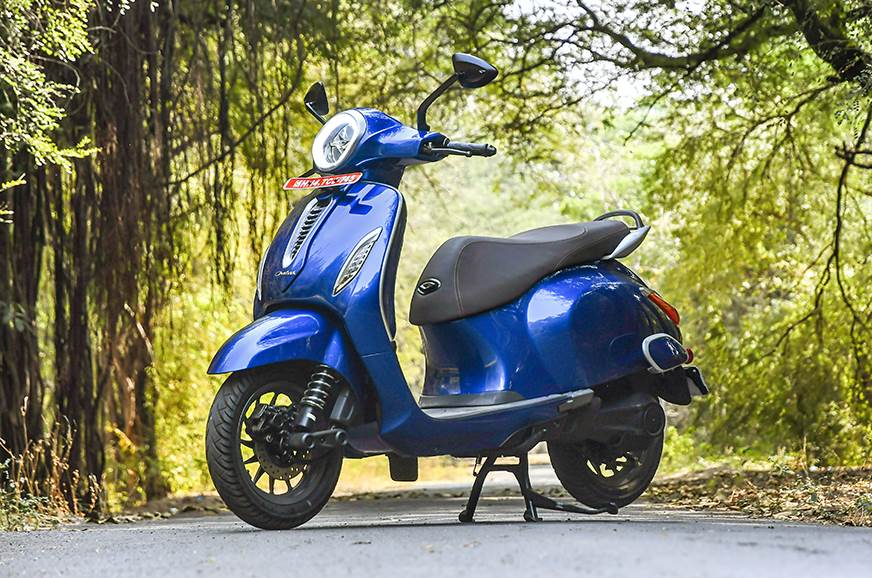
Bajaj Auto is gearing up to expand its offerings in the electric vehicle space. At Autocar Professional’s EV two-wheeler conclave, Rakesh Sharma, executive director, Bajaj Auto, said that the company is looking to expand the Chetak portfolio. Along with its Yulu brand, the company will add new products in the low- and mid-speed segments.
Bajaj’s electric business arm for two-wheelers, Chetak Technology, will spearhead its EV foray, with a sharp and specific focus on the segment. So far, the company is happy with the ‘outstanding’ response to the Bajaj Chetak.
The product has been widely accepted and its availability in the cities has been a cause to cheer about, added Sharma. “Our dilemma is how fast to expand. We want to expand to a hundred cities from 18 cities at present, and the response has been great. We are listening and finding that the product is good from our customers. However, the supply chain is not permitting the expansion,” he stated.
The Russia-Ukraine war, lockdown in China amid the COVID-19 wave, and supply chain issues are some of the factors that are challenging EV makers. The company adds that they are working on addressing supply chain issues.
Supply chain dilemma
Sharma said that, given the current scenario, it might take “around 12-18 months for the volatility to settle down”. While demand has picked up, the supply side is finding it difficult to keep up. This has also led to an impact on the cost of cells that make up the battery pack. “The cell cost is not looking good because of the supply-demand situation,” he said.
EVs, Yulu and ICE
The total cost of ownership is the singular factor driving the transition from ICE to EV. However, factors like the Russia-Ukraine war, COVID-19, and the semiconductor issues have affected the industry. “The operating cost is driven by the battery prices, and the initial ownership cost is high because of the battery cost. The cell price and the total cost of ownership will go up. It remains to be seen how customers respond to it and accordingly calibrate our actions," Sharma added.
Sharma said that if the battery prices come down, the penetration level might be at 15 percent or so in the next 3-5 years. This means, EV penetration might be at 30-40 percent in the next 5-7 years, leaving 60-70 percent of the two-wheelers as those powered by an internal combustion engine. “You have to manage that very well,” he said.
Bajaj Auto has its presence in over 70 countries and around 50 percent of the business comes from there. There are various levels of EV penetration in these countries and the company is looking to mark its presence there as well.
With regard to the company’s investment in the low-speed electric bike Yulu, Sharma said the alliance has given insights and information into a segment that is very alien to them. “Low-speed, delivery, rental, shared mobility and more are segments opening up in India. It is helping us shape our product portfolio in both B2B and B2C in two-wheelers and be a full-spectrum player,” he added.
EV fires: a setback?
With regard to recent fires that engulfed some e-scooters, Sharma said that the events were unfortunate and don’t serve well for the nascent EV industry. Almost 70-75 percent of two-wheeler buyers’ monthly income is Rs 40,000. "The resale value is important and this too is uncertain. Now on top of that, the other anxiety is about stability and vehicle quality, which in extreme cases can be life threatening. It just retards the change from ICE to EV,” he said.
According to him, there are things like convenience, better experience of riding and owning an EV two-wheeler that are positive forces. There are also constraining forces around range, charging ecosystem, end of life battery or the resale value of the vehicle.
“When players are making large bets on this transition by putting in a lot of capital, building a workforce, talent pool, management efforts, building a larger ecosystem of vendor stakeholder in India and overseas, and trying to establish a preeminent position, accidents though they are unfortunate, have the implication in terms of de-accelerating the transition,” Sharma averred. Issues like these will make the consumers think twice and wait longer to see how things pan out. They would likely postpone their decisions to transition from ICE to EV. “This flattens the change curve,” he adds.
He pointed out that Bajaj Auto was aware of such issues and had incorporated the approach of safety first in their design, quality standards and the rest. “Largely, it is a fantastic transition, if managed well. And, if the cost comes down with few technical breakthroughs, it would be a wonderful transition which will take the whole world forward. Yes, there will be issues here and there, but it is important to be a responsible player and ensure the quality standards are better,” he concluded.
https://ift.tt/0mv8iRE



